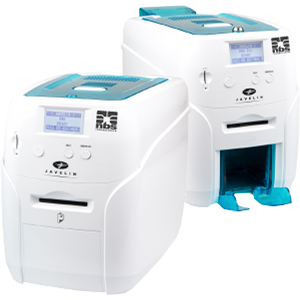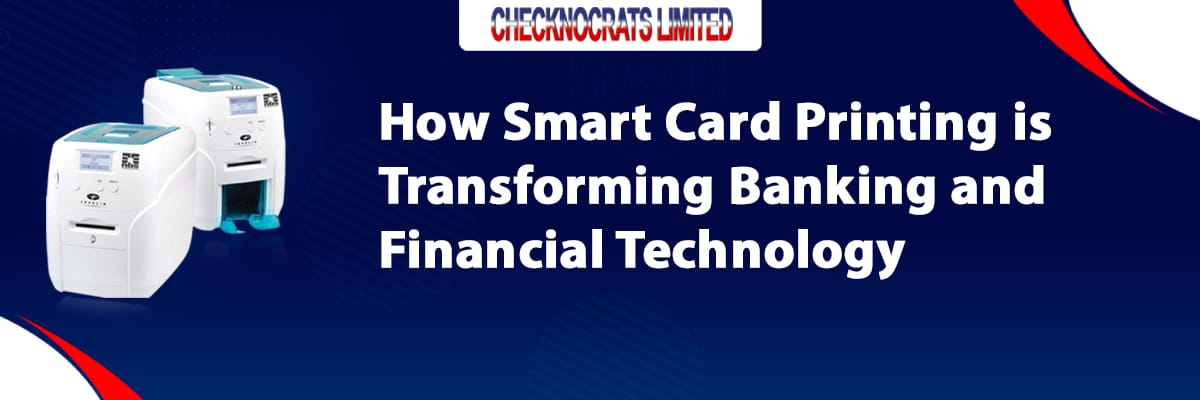How Smart Card Printing is Transforming Banking and Financial Technology
In today’s rapidly digitizing world, where speed, security, and personalization are essential, smart card printing has emerged as a game-changer in the banking and financial technology landscape. As traditional banking processes evolve into more secure and tech-driven systems, smart card technology is revolutionizing the way banks interact with customers, process transactions, and safeguard sensitive data.
From personalized debit and credit cards to multifunctional ID cards and contactless payment solutions, smart card printing is no longer a behind-the-scenes process—it’s a vital element in delivering efficient financial technology solutions. In this blog, we’ll explore how smart card printing is reshaping the financial sector, its role in customer experience, and why modern banks are investing heavily in this technology.
What Is Smart Card Printing?
Smart card printing refers to the process of creating physical cards embedded with integrated circuits (chips) that store and process data securely. These cards are often used for authentication, identification, and financial transactions. Unlike traditional magnetic stripe cards, smart cards offer enhanced security features such as encryption, PIN protection, and digital certificates.
There are two main types of smart cards:
- Contact cards: Inserted into card readers to complete a transaction.
- Contactless cards: Use radio-frequency identification (RFID) or Near-Field Communication (NFC) technology to enable tap-and-go transactions.
Modern banking equipment suppliers now offer compact, high-speed smart card printers that can instantly issue secure cards at the branch level or centralize production in high-volume settings.
Why Smart Card Printing Matters in Modern Banking
With the rise of mobile wallets, digital payments, and blockchain technology, you may wonder why physical cards still play a critical role. The answer lies in their versatility, security, and customer familiarity.
Here’s why smart card printing is indispensable:
1. Enhanced Security
Fraud prevention remains a top priority for banks and financial institutions. Smart cards store encrypted data and have secure microprocessors, making them highly resistant to cloning or skimming—two common methods of financial fraud. Dynamic data authentication (DDA) used in EMV smart cards (Europay, MasterCard, and Visa standard) ensures that every transaction is unique, significantly reducing the risk of duplication or unauthorized access.
Moreover, banks that integrate smart card technology into their secure cash handling solutions create a stronger foundation for safe and reliable financial operations, from ATM withdrawals to in-branch verifications.
2. Customer Personalization
Instant issuance and customization of smart cards enhance the customer experience. Banks can now print personalized debit or credit cards with the customer’s name, account number, and even photo—within minutes. This not only reduces waiting time but also adds a layer of personalization and trust.
Some financial institutions even allow users to design their cards online, selecting images, styles, and security features, and then collect the card in-branch. All of this is made possible through advanced smart card printing systems.
3. Contactless Convenience
In a post-pandemic world, contactless transactions are more than just a convenience—they are a necessity. Smart card printing enables banks to issue tap-to-pay cards that use NFC technology. Customers can use these cards for payments, access control, loyalty rewards, and transit—without touching surfaces or entering PINs for small transactions.
This shift has been a major catalyst in boosting digital transformation in finance, where financial technology solutions prioritize both health safety and transaction speed.
Smart Card Printing and Financial Technology Integration
Financial technology (FinTech) is the fusion of financial services with digital innovation. From AI-driven credit scoring to blockchain-based remittance, FinTech is redefining banking processes. Smart card printing aligns perfectly with this revolution.
Here’s how:
a. Integration with Core Banking Systems and Card Printing Systems
Modern card printers are equipped with APIs and software development kits (SDKs) that enable seamless integration with core banking software. This allows real-time data syncing, automated card issuance, and instant customer verification.
b. Multifunctional Applications
Smart cards are no longer limited to just transactions. They are now used for:
- Digital identity verification (KYC)
- Access control to ATMs and lockers
- Authentication for online banking
- E-wallet integration
By printing multifunctional smart cards, banks consolidate various services into a single, secure credential.
c. Remote and Mobile Banking Support
Smart card printing systems support centralized issuance, where customers can apply online and receive cards at their doorstep. Some FinTech startups offer on-demand printing kiosks at remote locations or ATMs, expanding the reach of banking services to underbanked populations.
Role of Banking Equipment Suppliers in Smart Card Printing
Reliable banking equipment suppliers play a crucial role in enabling financial institutions to adopt and scale smart card printing. These suppliers provide:
- Industrial-grade card printers
- Card encoding systems (for both chip and magnetic stripe)
- Software for personalization and encryption
- Consumables like blank smart cards, ribbons, and laminates
- Maintenance and technical support
A strategic partnership with a leading supplier ensures uninterrupted card issuance, data compliance, and consistent card quality. Additionally, suppliers often work with banks to implement secure printing environments, maintaining confidentiality and regulatory standards.
Benefits for Banks and Financial Institutions
The advantages of investing in smart card printing extend beyond technology. Let’s look at the strategic benefits for banks:
✅ Faster Onboarding
New customers can receive and use their cards the same day, speeding up the onboarding process.
✅ Brand Differentiation
Custom-designed cards boost brand visibility and customer loyalty.
✅ Reduced Operational Costs
Eliminating third-party vendors for card issuance helps cut costs and reduces delays.
✅ Data Analytics Integration
Embedded chips can track usage patterns and inform banks on spending behavior, enabling better service customization.
Case Study: Smart Cards Driving Financial Inclusion
In emerging markets like Africa and Southeast Asia, smart card printing is instrumental in driving financial inclusion. Many banks partner with government agencies and NGOs to distribute smart cards that double as:
- Banking tools
- Government ID
- Social welfare disbursement cards
This model enables unbanked populations to access formal financial services securely and conveniently, all thanks to the scalability of smart card printing technology.
Conclusion
Smart card printing is no longer an optional upgrade—it’s a critical component of modern banking. As banks compete to deliver faster, safer, and more personalized services, smart cards serve as the bridge between traditional banking and the future of financial technology solutions.
With the support of trusted banking equipment suppliers and the integration of secure cash handling solutions, banks can confidently navigate the demands of digital transformation. Whether for urban customers seeking convenience or rural populations striving for inclusion, smart card printing empowers financial institutions to serve better, faster, and more securely.
Looking for advanced smart card printing solutions? Call Checknocrats Limited — a leading provider of card printing and banking solutions in East Africa.


